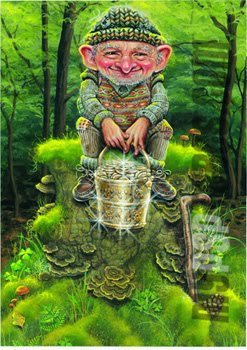Leprechaun: One Of The Most Famous And Powerful Creatures Of The Irish Faerie Folk
A. Sutherland - AncientPages.com - Leprechauns are mainly found in Irish folklore. A Leprechaun means in Irish: leipreachán. It is one of the most famous creatures of Irish faerie folk.
Its name is derived from the Gaelic luacharma'n, ("pygmy") or leith brogan ("maker of one shoe").
Many myths and legends of Leprechaun (also known as wee folk), are centuries old.
These stories have been passed down from one generation to another and children in Ireland are taught the folklore stories of mysterious Leprechaun creatures from a very early age.
The leprechaun’s appearance varied much depending on where in Ireland he was found.
It is believed “that every leprechaun has a pot of gold hidden deep in the Irish countryside. To protect the leprechaun’s pot of gold the Irish fairies gave them magical powers to use if ever captured by a human or an animal... Leprechauns are known to have wild music sessions at night, which in Ireland are known as ‘Ceili’s, with hundreds of Irish leprechauns gathering to dance, sing and drink.
The leprechaun is fond of drinking Poteen, moonshine, but must not be mistaken by its Irish cousins the clurichauns, who are drunken creatures, who love to cause chaos around Ireland at night time..." ( R. Mix, The Woodstock Independent)
Usually, he takes the form of an old man, about 2-3 foot tall, clad in a green or red coat, buckled shoes, and hats, who enjoys participating in mischief.
See also:
Fin Folk – Mythical Amphibious Sea People On Orkney And Shetland
Ugly Trolls – Fascinating Mythical Creatures Of Scandinavia
Arimaspians: Mysterious Mighty One-Eyed People From The North
This magical figure plays several roles in Irish folklore. He is a most untrustworthy trickster that deceives whenever possible.
But sometimes, the Leprechaun is only a playful, intelligent creature, generally harmless, even if credited with the odd, small tricks on farmers and local villagers.
When a ladder falls over, a toe is stubbed or another ‘unlucky’ event occurs, it is certainly the fault of the Leprechaun.
The magical power given to him by the Irish fairies, the Leprechaun uses if ever captured by a human or an animal or, to protect his pot of gold, hidden deep in the Irish countryside.
The Leprechaun is known to successfully evade capture from humans. If ever captured by a human, the Leprechaun has the magical power to grant three wishes in exchange for their release.
In the Irish folklore, Leprechauns are known to be the only Faerie that has a ‘business’, which is shoemaking. Therefore, they are often called fairy cobblers, for they make shoes for elves but unfortunately, only one shoe, never a pair.
It is not easy to find the Leprechauns; they live underground in a large network of caves. It’s the only safe place, too small for humans, and hidden from any dangers found above the ground. The entrance of caves can be found masked as rabbit holes are can be found in a shallow trunk of a fairy tree.
The faerie trees are protected by magic and if any human damages one a lifetime of bad luck will occur.
Written by A. Sutherland AncientPages.com Staff Writer
Copyright © AncientPages.com All rights reserved. This material may not be published, broadcast, rewritten or redistributed in whole or part without the express written permission of AncientPages.com
Expand for referencesBob Curran - The Truth About Leprechauns
Carol Rose - Spirits, Fairies, Leprechauns, and Goblins
More From Ancient Pages
-
 Fragment Of A Fine Marble Statuette Of Heracles Found In Jezreel Valley, Israel
Archaeology | May 24, 2023
Fragment Of A Fine Marble Statuette Of Heracles Found In Jezreel Valley, Israel
Archaeology | May 24, 2023 -
 Was The World’s Oldest Surviving Garden Created By Ancestors Of The Katzie First Nation 3,800 Years Ago In British Columbia?
Archaeology | Dec 27, 2016
Was The World’s Oldest Surviving Garden Created By Ancestors Of The Katzie First Nation 3,800 Years Ago In British Columbia?
Archaeology | Dec 27, 2016 -
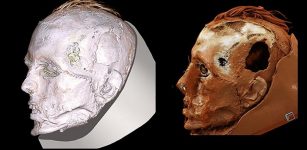 Never-Before-Seen Face Of A Tattooed Tashtyk Man Hidden Behind A Gypsum Death Mask Revealed
Archaeology | Jul 17, 2020
Never-Before-Seen Face Of A Tattooed Tashtyk Man Hidden Behind A Gypsum Death Mask Revealed
Archaeology | Jul 17, 2020 -
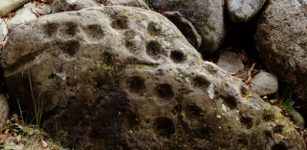 Largest Collection Of Ancient “Cup-Marked” Rocks Ever Found In Scotland
Civilizations | Nov 23, 2018
Largest Collection Of Ancient “Cup-Marked” Rocks Ever Found In Scotland
Civilizations | Nov 23, 2018 -
 Hidden Details In Ancient Egyptian Tomb Paintings Revealed By Chemical Imaging
Featured Stories | Jul 28, 2023
Hidden Details In Ancient Egyptian Tomb Paintings Revealed By Chemical Imaging
Featured Stories | Jul 28, 2023 -
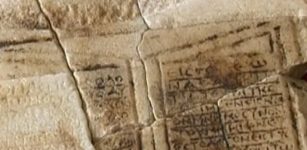 Last Fragment Of Early Christian Christogram Found In Ancient City Of Parthicopolis, Bulgaria
Artifacts | Sep 9, 2015
Last Fragment Of Early Christian Christogram Found In Ancient City Of Parthicopolis, Bulgaria
Artifacts | Sep 9, 2015 -
 On This Day In History: First Battle Of Reading Took Place – On Jan 4, 871 AD
News | Jan 4, 2017
On This Day In History: First Battle Of Reading Took Place – On Jan 4, 871 AD
News | Jan 4, 2017 -
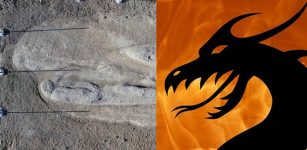 Ancient Dragon Stone That Inspired Legends Discovered In Turkey
Archaeology | Dec 12, 2018
Ancient Dragon Stone That Inspired Legends Discovered In Turkey
Archaeology | Dec 12, 2018 -
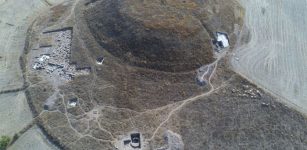 Mysterious Ancient Circular Structure Discovered In Turkey – Has Zippalanda, The Lost City Of The Hittites Been Found?
Archaeology | Dec 27, 2022
Mysterious Ancient Circular Structure Discovered In Turkey – Has Zippalanda, The Lost City Of The Hittites Been Found?
Archaeology | Dec 27, 2022 -
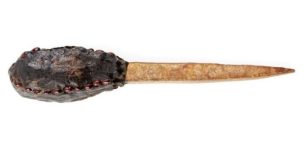 Tomography And Radiocarbon Dating Used To Examine Australian Aboriginal Knife
Archaeology | Jul 3, 2023
Tomography And Radiocarbon Dating Used To Examine Australian Aboriginal Knife
Archaeology | Jul 3, 2023 -
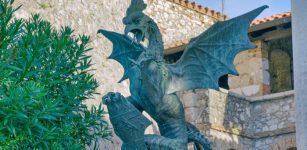 Legendary Basilisk With Deadly Petrifying Stare – King Of The Serpents
Featured Stories | Dec 27, 2021
Legendary Basilisk With Deadly Petrifying Stare – King Of The Serpents
Featured Stories | Dec 27, 2021 -
 Aboriginal Underwater Sites Off The Coast Of Australia – Discovered
Archaeology | Jul 2, 2020
Aboriginal Underwater Sites Off The Coast Of Australia – Discovered
Archaeology | Jul 2, 2020 -
![Horses in the Eurasian steppes: Already 5000 years ago, they served pastoralists as a source of milk and a means of… [more] © A. Senokosov](https://www.ancientpages.com/wp-content/uploads/2021/09/pastoraliststeppe15-307x150.jpg) Milk Enabled Massive Steppe Migration – A New Study
Archaeology | Sep 24, 2021
Milk Enabled Massive Steppe Migration – A New Study
Archaeology | Sep 24, 2021 -
 DNA Offers Insights Into The Use Of Plants By Humans In The Paleolithic Age
Archaeology | Oct 13, 2022
DNA Offers Insights Into The Use Of Plants By Humans In The Paleolithic Age
Archaeology | Oct 13, 2022 -
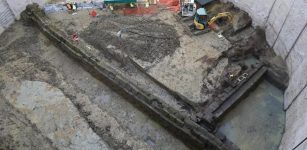 Oldest Aqueduct Dated To 3rd Century BC Discovered In Rome
Archaeology | Apr 4, 2017
Oldest Aqueduct Dated To 3rd Century BC Discovered In Rome
Archaeology | Apr 4, 2017 -
 On This Day In History: Parachute Jump From 1,000 m Above Paris Is Recorded – On Oct 22, 1797
News | Oct 22, 2016
On This Day In History: Parachute Jump From 1,000 m Above Paris Is Recorded – On Oct 22, 1797
News | Oct 22, 2016 -
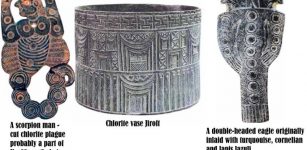 Is Mysterious Prehistoric Jiroft The Legendary Land Of Aratta?
Featured Stories | Aug 20, 2015
Is Mysterious Prehistoric Jiroft The Legendary Land Of Aratta?
Featured Stories | Aug 20, 2015 -
 Did An Extraterrestrial Spacecraft Land In Ancient China? Remarkable UFO Accounts From The Past
Ancient Mysteries | Nov 17, 2014
Did An Extraterrestrial Spacecraft Land In Ancient China? Remarkable UFO Accounts From The Past
Ancient Mysteries | Nov 17, 2014 -
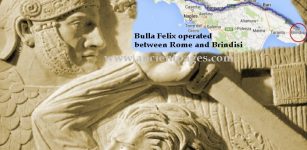 Bulla Felix: Legendary Italian Leader Of Outlaws Who Robbed The Rich And Gave To The Poor
Featured Stories | Mar 23, 2023
Bulla Felix: Legendary Italian Leader Of Outlaws Who Robbed The Rich And Gave To The Poor
Featured Stories | Mar 23, 2023 -
 Buddha Statues With Broken Arms, Legs And Without Heads Unearthed In Angkor Wat, Cambodia
Archaeology | Apr 22, 2020
Buddha Statues With Broken Arms, Legs And Without Heads Unearthed In Angkor Wat, Cambodia
Archaeology | Apr 22, 2020


